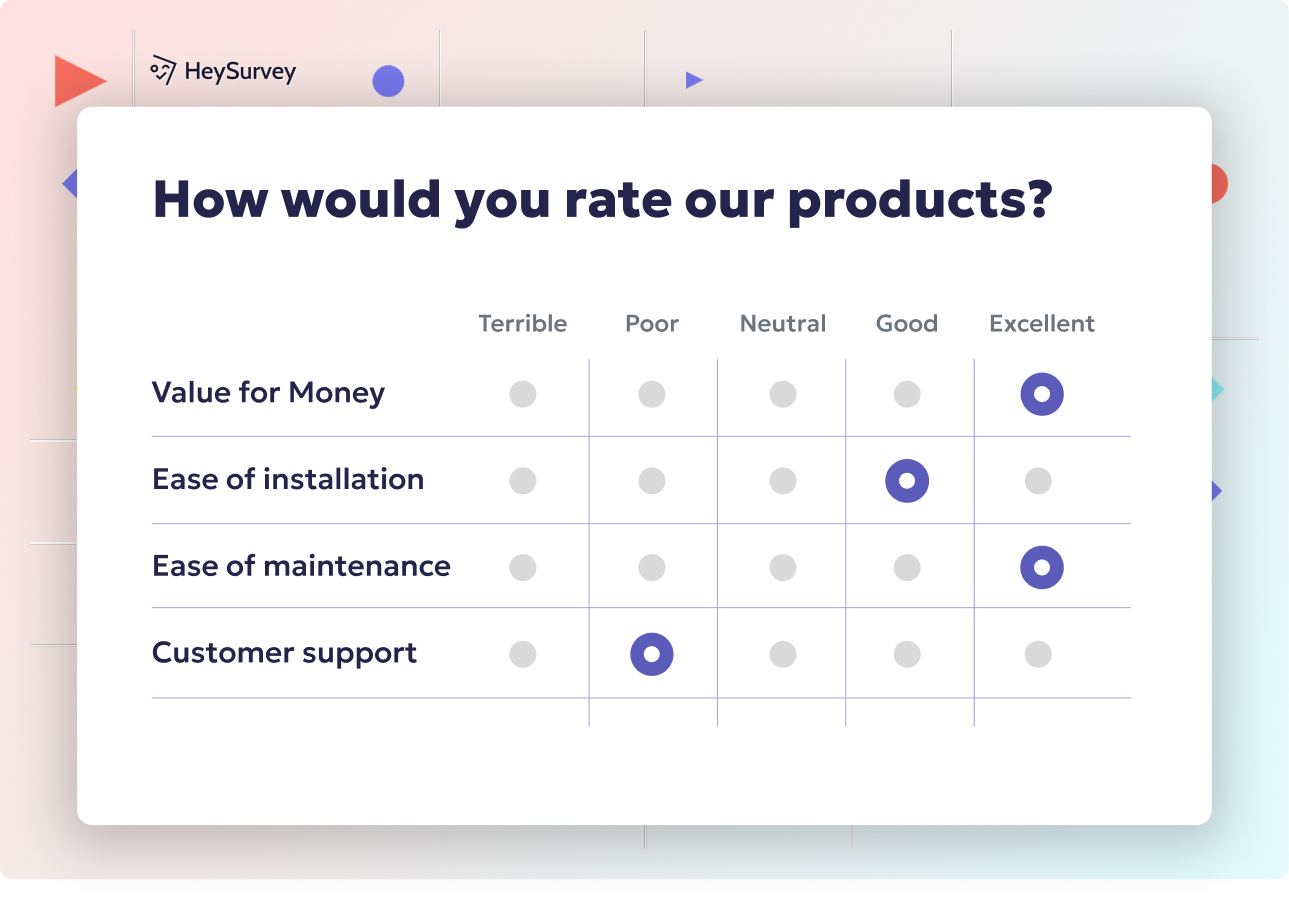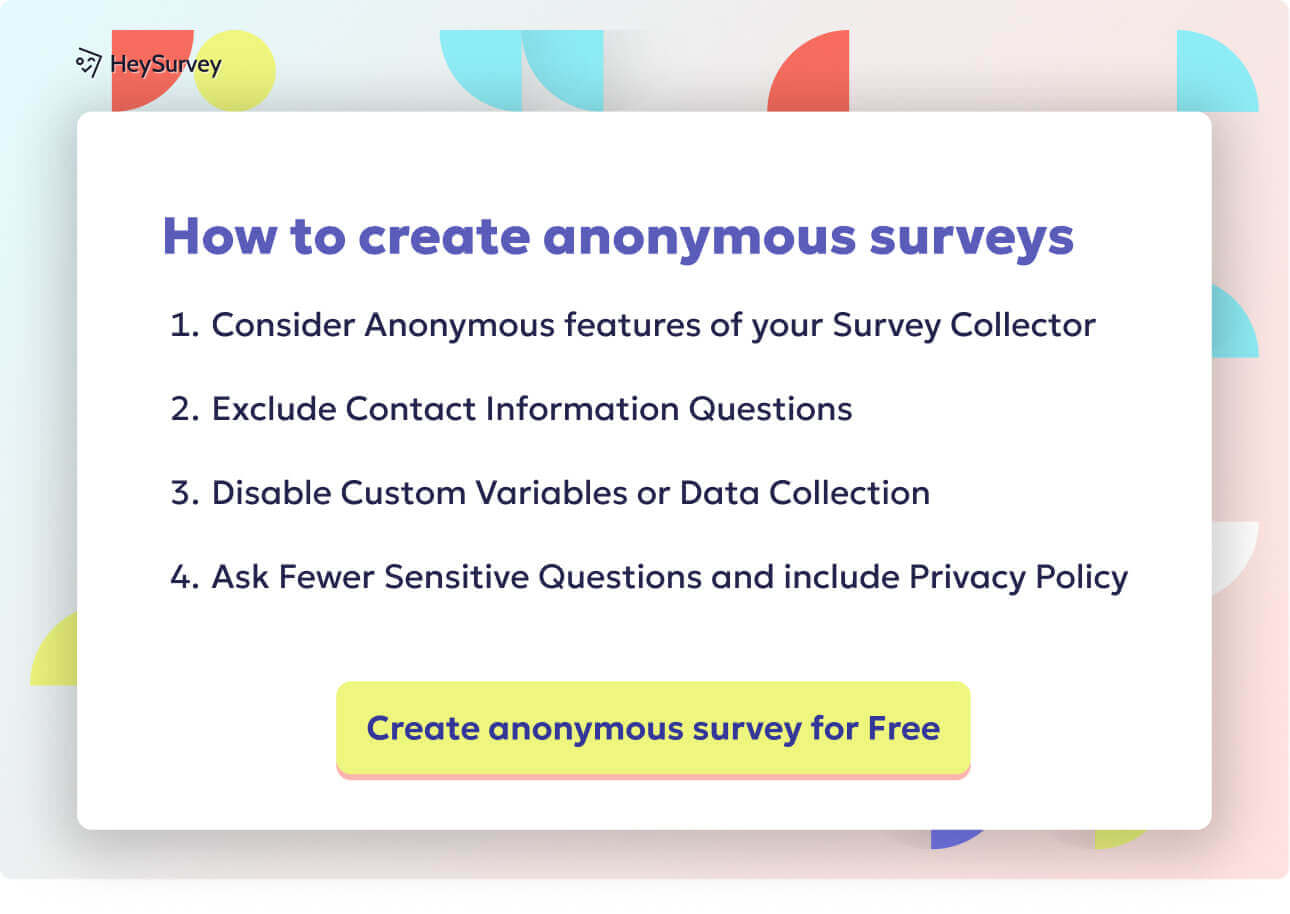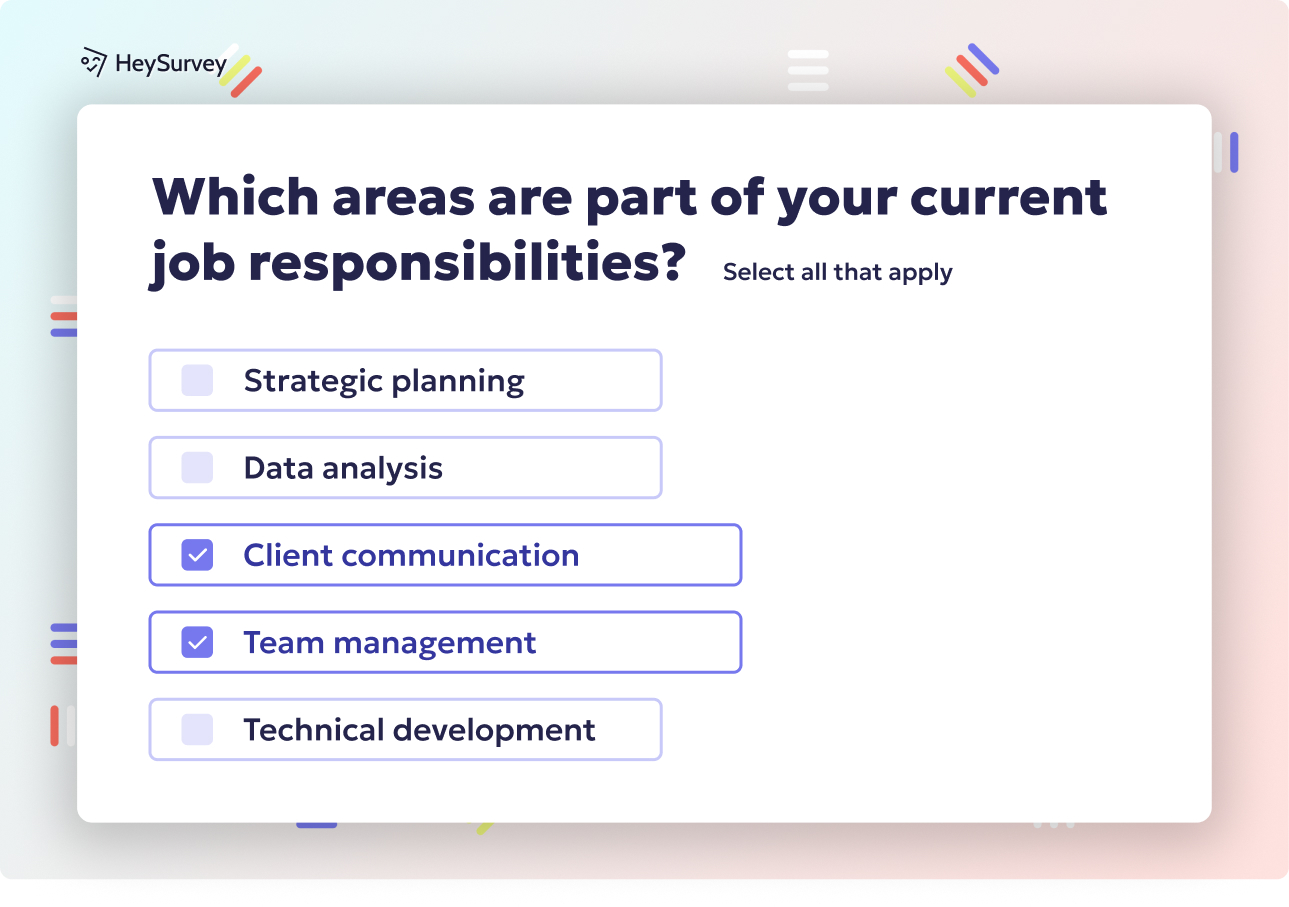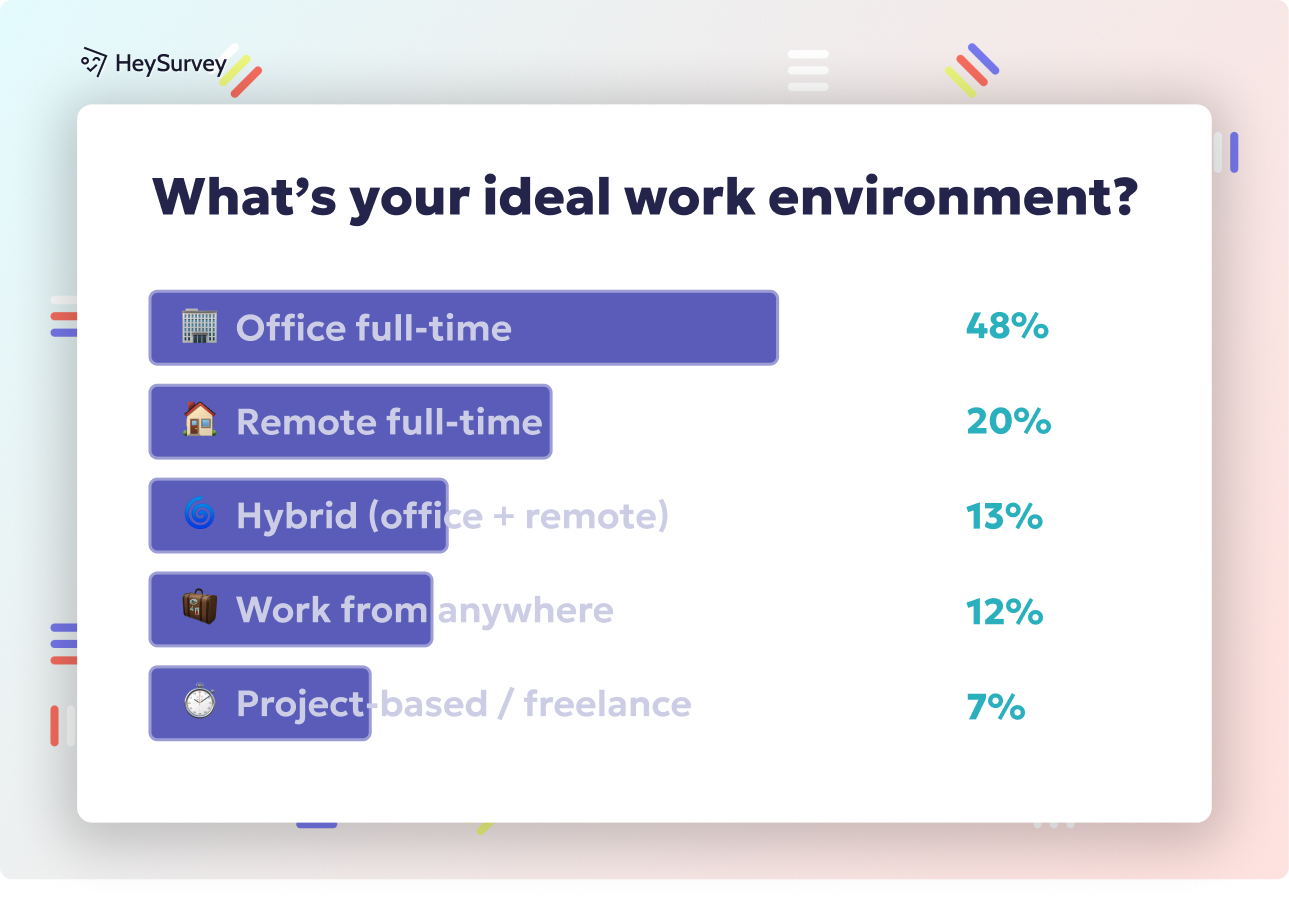31 Student Engagement Survey Questions for Schools & Colleges
Explore 28 essential student engagement survey questions to measure motivation, course content, teaching, collaboration, and tech use effectively.
Student engagement surveys are a lifeline for any college or K-12 institution striving for excellence. They help quantify engagement, a blend of behavioral, emotional, and cognitive involvement in learning. These surveys can be invaluable at the start of a term for benchmarking, useful during midterm pulse checks, and essential at the end of a course for evaluations, making them a must for everything from program reviews to accreditation reports.
Course Content Engagement Survey Questions
Why & When to Use
Understanding how students connect with your curriculum is the secret sauce of great teaching. Deploying curriculum engagement questions gives you insights into whether your course readings, activities, and assignments are making the impact you intend. Use these surveys mid-semester or shortly after unveiling a new curriculum unit.
When you collect this feedback at just the right time, you can make real-time adjustments to keep motivation and interest high. After all, you want those materials to resonate, not collect dust!
- Surveys are especially valuable if:
- You have recently updated your curriculum.
- You notice a dip in participation or assignment completion.
- Students ask for more practical or relevant examples.
A little well-timed intel can tip the balance between a lukewarm semester and one that’s genuinely engaging.
Sample Questions
How relevant do you find the course readings to your personal learning goals?
Rate the clarity of learning objectives presented at the start of each module.
How often do course activities encourage you to apply concepts to real-world scenarios?
To what extent do assessments (quizzes, projects) reinforce what you learn in class?
How effectively does the course pacing keep you motivated and on track?
These content relevance survey items help pinpoint what motivates students, what leaves them cold, and where you might need to turn up the heat. When students see that their feedback leads directly to changes, their engagement climbs even higher.
Effective student engagement surveys should include clear, concise questions that address specific aspects of engagement, such as classroom experiences and interactions with faculty. (questionpro.com)

Creating a student engagement survey with HeySurvey couldn’t be easier, even if you’re a total newbie! Here’s how to get your survey up and running in just three simple steps:
Step 1: Create a New Survey
- Head to HeySurvey and click Create Survey to start fresh or jump straight into a template tailored for student engagement surveys with the handy button below the instructions.
- Give your survey a name—something like “Student Engagement Check-In” so it’s easy to find later.
- You’ll be taken to the Survey Editor, where the magic begins.
Step 2: Add Questions
- Click the Add Question button at the top or between existing items to insert your questions.
- Choose the best question type for each: Likert-scale questions for attitudes or perceptions, choice questions for multiple options, or text for open feedback.
- Fill in your question text—go ahead and copy from your favorite student engagement question lists!
- Don’t forget to mark key questions as required to ensure clear, usable data.
- You can also spice things up by adding images or formatting question text with bold or bullet points.
Step 3: Publish Survey
- Once you’ve added all your questions, hit the Preview button to see exactly how students will experience your survey.
- Make any final tweaks to polish the design or wording.
- When ready, click Publish. If you don’t have an account yet, you’ll need to register to save and publish your survey.
- Grab the shareable link to send to students or embed the survey directly in your institution’s site!
Bonus Step 1: Apply Branding
- Open the Designer Sidebar and upload your school’s logo to make the survey instantly recognizable.
- Customize colors, fonts, and backgrounds to match your institution’s style—hello, classy and professional appearance!
- These tweaks help students feel they’re filling something official and cared for.
Bonus Step 2: Define Survey Settings
- Access the Settings Panel to set start and end dates, ensuring your survey only runs during your target timeframe.
- Set a response limit if you want to control how many submissions you receive.
- Add a thank-you page URL or customize the survey ending message to show appreciation for your students’ time.
Bonus Step 3: Skip Into Branches
- Use branching logic to customize the survey path based on responses—if a student answers “low engagement,” you can branch into follow-up questions exploring that area deeper.
- This keeps the survey relevant, concise, and more engaging for respondents.
And voilà! With these steps, you’re ready to craft a sleek, insightful student engagement survey on HeySurvey that you can deploy quickly and easily. Your students’ voices will thank you for it!
Teaching Methods & Instructor Interaction Survey Questions
Why & When to Use
The energy of a classroom often comes down to teaching methods and instructor interaction. If your teaching techniques fall flat or students feel distant from their instructors, engagement can take a nosedive. That’s why measuring this aspect halfway through the course is ideal—it gives faculty a chance to switch gears before it’s too late.
Students want to know their voices matter, especially when it comes to teaching styles and teacher accessibility. They’ll tell you if lectures are snooze-fests or if online forums feel welcoming.
- These surveys should be rolled out if:
- The class has hit a midterm slump.
- There are new instructors looking to refine their approach.
- You’ve introduced innovative teaching methods.
Pinpoint quick wins and areas for improvement while there's still time to make a difference.
Sample Questions
How engaging are the instructor’s teaching methods (e.g., lectures, discussions, multimedia)?
How comfortable do you feel asking questions during or after class?
Rate the frequency of constructive feedback you receive on assignments.
How well does the instructor connect course material to your interests or career goals?
To what extent does the instructor encourage diverse viewpoints in class discussions?
Responses to these instructor engagement survey questions shed light on every aspect of teacher-student dynamics. When students see their input leads to more engaging lessons or more supportive interactions, their connection to your institution grows.
Effective teaching practices, such as organized instruction and clear explanations, significantly enhance student engagement and learning outcomes. (nsse.indiana.edu)
Peer Collaboration & Sense of Community Survey Questions
Why & When to Use
A classroom’s heartbeat is its sense of community and teamwork. When students feel supported by their peers, they’re far more likely to stick around and push themselves. Surveys that measure peer collaboration and classroom community give you a read on emotional and social engagement—major factors in retention and student success.
Deploy these surveys after group projects or as you approach the end of the term. That way, you can capture both the initial and enduring impact of your community-building efforts.
- Use these surveys if:
- Students are struggling with group work.
- There’s uncertainty about classroom cohesion.
- You’re considering new approaches to student collaboration.
Fostering a genuine community makes every other engagement strategy even more powerful.
Sample Questions
How supported do you feel by your classmates when tackling challenging tasks?
Rate the effectiveness of group activities in enhancing your understanding of course topics.
How comfortable are you sharing ideas or opinions with peers in this course?
To what extent do you feel a sense of belonging in this classroom community?
How fairly are responsibilities distributed in group assignments?
These questions unlock insights into the sense of belonging and teamwork students experience. When you act on this feedback, the class transforms from a collection of individuals into a thriving learning community.
Learning Environment & Resource Utilization Survey Questions
Why & When to Use
Don’t underestimate the power of the learning environment and resources. From the brightness of your classroom to the digital wizardry of your learning management system, physical and digital spaces play a big role in how students engage. Surveying students about facilities and resources helps schools and colleges plan for meaningful upgrades.
Best times to gather this feedback: - Right after a significant update or facility renovation. - Whenever students are introduced to new study tools. - As part of routine facilities planning to ensure resources keep pace with student needs.
When students see that their environment is a priority, their sense of investment grows.
Sample Questions
How conducive is the classroom environment (lighting, acoustics, seating) to your learning?
How accessible are supplementary resources (tutoring centers, study guides) when you need them?
Rate the usefulness of multimedia resources (videos, simulations) provided in the course.
How frequently do you use the learning management system to enhance your study habits?
How satisfied are you with the availability of quiet study spaces on campus?
With these resource utilization survey questions, you’ll spot opportunities to boost engagement by improving space, comfort, or accessibility. It’s a practical way to measure exactly what matters in the day-to-day student experience.
A meta-analysis of 225 studies found that active learning reduces failure rates from 32% to 21% and increases student performance on assessments by 0.47 standard deviations. (en.wikipedia.org)
Motivation & Self-Regulation Survey Questions
Why & When to Use
If engagement were a recipe, motivation and self-regulation would be the secret ingredients. They drive students to set goals, push through rough patches, and celebrate their own achievements. These survey questions help you measure intrinsic drives (like love of learning) and extrinsic motivators (like grades or rewards).
The ideal times for this survey? - At the start of a term, to set a baseline for incoming student motivation. - At midterm, to track changes and coach students through challenging periods.
With this data, educators can develop supports that genuinely move the needle on engagement.
Sample Questions
How confident are you in your ability to master the skills taught in this course?
How often do you set specific study goals for yourself each week?
Rate your persistence when coursework becomes challenging.
How motivated are you by the grades or feedback you receive?
How effectively do you manage your time to meet assignment deadlines?
These motivation survey items show you exactly where your learners need encouragement, and where their own drive is keeping them in the game. With real insights in hand, educators can spur students on to even greater heights.
Technology & Online Platform Engagement Survey Questions
Why & When to Use
Modern classrooms increasingly depend on technology and online platforms. When tech works, learning soars; when it flops, frustration mounts. Surveys focused on digital experiences are essential, especially in hybrid or fully online programs.
Launch these after your students have spent a few weeks using new technology, or at the end of an online course module. This way, feedback is fresh and actionable.
- Key deployment moments:
- Following the rollout of a new LMS or major tech update.
- In response to spikes in technical difficulties or digital fatigue.
- As a part of regular module wrap-ups in online courses.
Keeping a pulse on tech issues keeps engagement high and anxiety low.
Sample Questions
How intuitive do you find the navigation within the online learning platform?
Rate the reliability of technology (video conferencing, discussion boards) used in this course.
How engaging are multimedia elements (interactive quizzes, polls) during live sessions?
To what extent do technical issues hinder your participation?
How satisfied are you with instructor responsiveness in online forums or chat?
With these online learning engagement survey questions, it’s easy to spot pain points and success stories quickly. Swift improvements keep students feeling supported and connected to both classmates and instructors—no matter where learning happens.
Best Practices: Crafting High-Impact Student Engagement Surveys (Dos & Don’ts)
Creating student engagement surveys that actually yield actionable insights is a bit of an art. There’s more to it than jotting down some questions and hitting send. High-impact surveys start with a thoughtful design that aligns every question with a clear objective.
Let’s start with the “Dos”:
- Do keep surveys concise, aiming for less than 10 minutes to complete.
- Do pilot test your survey with a small group to weed out confusion.
- Do blend quantitative Likert-scale items with a few optional, open-ended questions for richer feedback.
- Do promise and protect anonymity, so students are honest.
- Do align your questions with the specific goals for your course, department, or accreditation process.
On the flipside, a few definite “Don’ts”:
- Don’t double-up on concepts within one question (double-barreled items are confusing).
- Don’t use jargon or technical terms that students may not understand.
- Don’t use leading or biased phrasing that nudges students toward a preferred answer.
- Don’t make every open-ended question mandatory—it leads to survey fatigue.
- Don’t bombard students with surveys every week; frequency matters.
When you follow learner engagement survey best practices, your data comes in sharper and your students feel respected—win-win!
Final Thoughts & Next Steps for Institutional Action
Regularly deploying student engagement surveys is one of the smartest moves an institution can make. The benefits are clear: actionable insights drive improvement in teaching, learning, and community.
To get the most out of your data: - Benchmark against past results and between student cohorts. - Use findings for quick-win improvements that students can see quickly. - Establish feedback loops where students know their input leads to change. - Track responses year-over-year for accreditation, retention, and long-term planning.
Continuous assessment and responsive action are the keys to unlocking stronger engagement—and, ultimately, academic success for every student.
Related Student Survey Surveys

31 Survey Questions Examples for Students to Improve Learning
Discover 28 survey questions examples for students across 6 key types to boost engagement, feedba...

29 Class Survey Questions: Proven Templates for Every Stage
Discover 40+ proven class survey questions with detailed templates for every course stage to boos...

30 Survey Questions for Students: 6 Types & When to Use Them
Explore 6 powerful survey types with 30+ sample survey questions for students to boost engagement...

